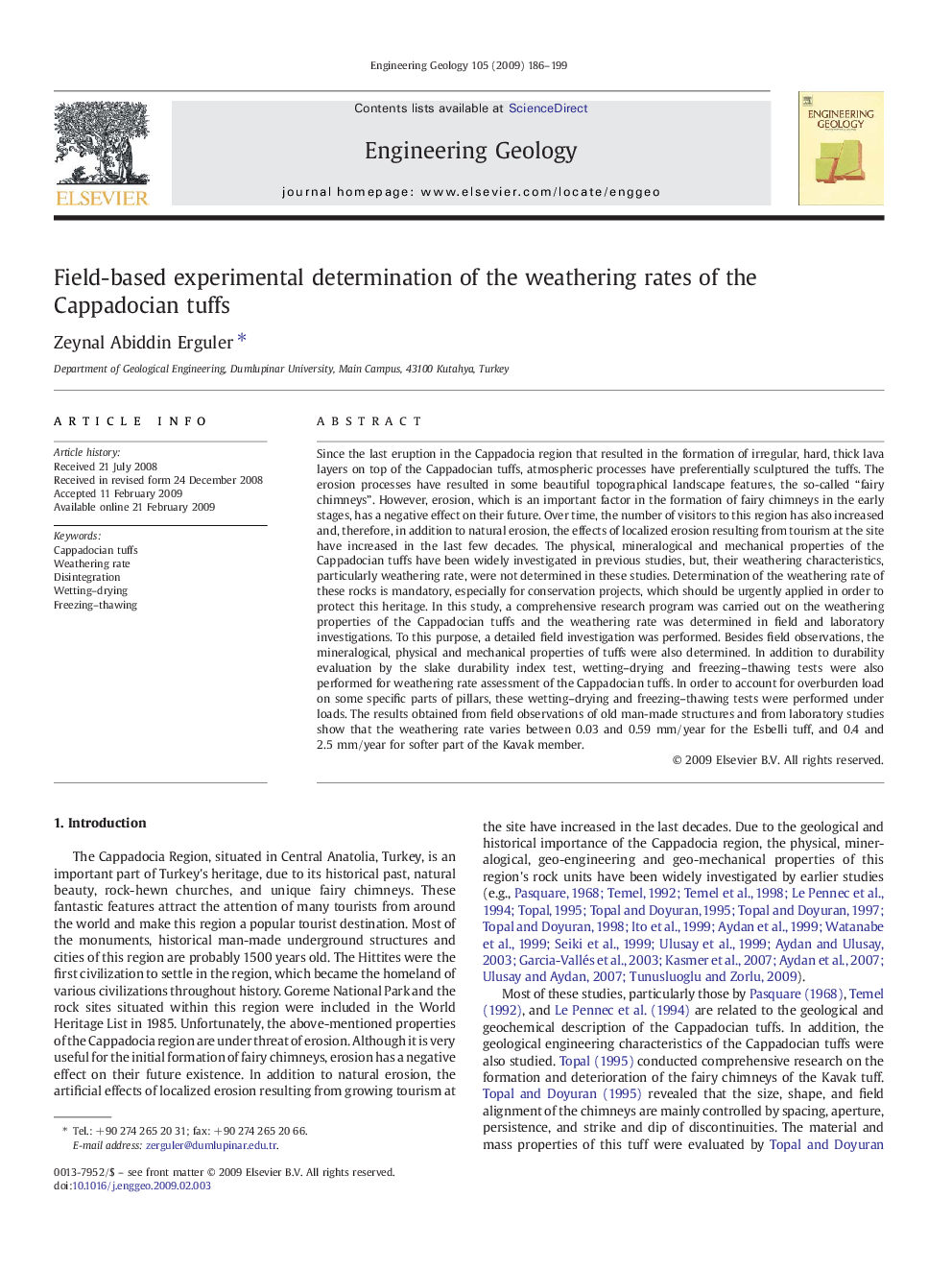| Article ID | Journal | Published Year | Pages | File Type |
|---|---|---|---|---|
| 4744743 | Engineering Geology | 2009 | 14 Pages |
Since the last eruption in the Cappadocia region that resulted in the formation of irregular, hard, thick lava layers on top of the Cappadocian tuffs, atmospheric processes have preferentially sculptured the tuffs. The erosion processes have resulted in some beautiful topographical landscape features, the so-called “fairy chimneys”. However, erosion, which is an important factor in the formation of fairy chimneys in the early stages, has a negative effect on their future. Over time, the number of visitors to this region has also increased and, therefore, in addition to natural erosion, the effects of localized erosion resulting from tourism at the site have increased in the last few decades. The physical, mineralogical and mechanical properties of the Cappadocian tuffs have been widely investigated in previous studies, but, their weathering characteristics, particularly weathering rate, were not determined in these studies. Determination of the weathering rate of these rocks is mandatory, especially for conservation projects, which should be urgently applied in order to protect this heritage. In this study, a comprehensive research program was carried out on the weathering properties of the Cappadocian tuffs and the weathering rate was determined in field and laboratory investigations. To this purpose, a detailed field investigation was performed. Besides field observations, the mineralogical, physical and mechanical properties of tuffs were also determined. In addition to durability evaluation by the slake durability index test, wetting–drying and freezing–thawing tests were also performed for weathering rate assessment of the Cappadocian tuffs. In order to account for overburden load on some specific parts of pillars, these wetting–drying and freezing–thawing tests were performed under loads. The results obtained from field observations of old man-made structures and from laboratory studies show that the weathering rate varies between 0.03 and 0.59 mm/year for the Esbelli tuff, and 0.4 and 2.5 mm/year for softer part of the Kavak member.
